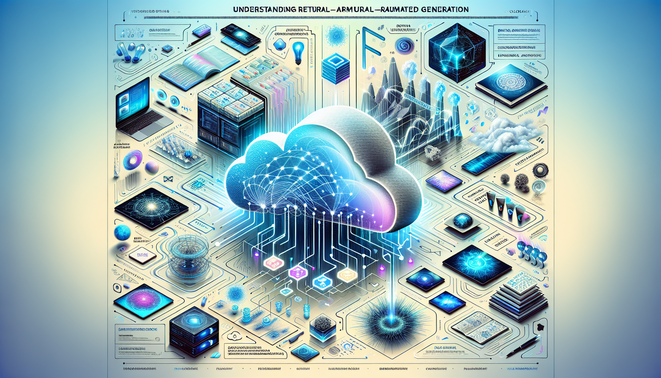Physical Address
304 North Cardinal St.
Dorchester Center, MA 02124
Physical Address
304 North Cardinal St.
Dorchester Center, MA 02124

Understanding Retrieval-Augmented Generation and Its Applications in Cloud Computing
Meta Summary:
Learn about Retrieval-Augmented Generation (RAG)—a cutting-edge AI methodology that combines data retrieval with generative models. This comprehensive guide explores platforms like LangChain and LlamaIndex, illustrating their applications in cloud computing environments, and offers insights into future developments.
Key Takeaways
Enhance AI Outputs: RAG applications improve AI interactions by integrating retrieval techniques with generative models.
Platform Strengths: LangChain focuses on language processing workflows, whereas LlamaIndex excels in efficient data retrieval.
Architecture and Integration: Understanding these platforms’ architectures and integration capacities is vital for effective implementation.
Best Practices: Utilize modular architecture and continuous updates to optimize RAG implementations.
Future Trends: Expect advanced cloud integration and real-time processing capabilities in upcoming AI platforms.
Introduction to RAG Applications
Understanding RAG:
Retrieval-Augmented Generation (RAG) elevates generative AI models by incorporating robust data retrieval processes. These processes enhance the precision and contextual relevance of AI-generated outputs, benefiting enterprises by improving customer interactions, data analysis, and decision-making capabilities.
Integration and Impact:
RAG bridges traditional retrieval systems with modern AI generative models. By coupling retrieval mechanisms like databases or search engines with models such as transformers, RAG systems utilize extensive information repositories to produce well-informed responses. This leads to more relevant AI outputs, exemplified by customer service chatbots that draw from historical interactions and knowledge bases to respond accurately, ultimately boosting user satisfaction.
Overview of LangChain and LlamaIndex
LangChain and LlamaIndex Platforms:
LangChain and LlamaIndex are leading platforms for developing RAG applications. While LangChain facilitates chaining of language model computations, LlamaIndex specializes in efficient data retrieval. Both platforms, when used in tandem, offer superior AI solutions.
LangChain Essentials:
LangChain serves as an AI framework that simplifies language model application creation through structured computation steps. It features a modular architecture that supports easy integration with various language models and external data sources.
LlamaIndex Highlights:
Specializing in data indexing and retrieval, LlamaIndex effectively handles large datasets, making it optimal for rapid and precise data retrieval needs. Its standout attributes include robust indexing algorithms and compatibility with distributed systems, enhancing both scalability and performance.
Architecture Comparison
LangChain’s Architecture:
LangChain employs a chain-based computation model, enabling developers to construct interconnected processing steps. This flexible architecture supports a diverse range of applications, from chatbots to analytical tools.
LlamaIndex’s Architecture:
Conversely, LlamaIndex prioritizes indexing and retrieval, leveraging advanced techniques to maintain low-latency responses, ideal for real-time data access scenarios.
Case Study:
A tech firm used LangChain to craft a customer service chatbot. By chaining diverse language models and data sources, they increased response times by 50%, significantly boosting customer satisfaction and operational efficiency.
Ease of Integration
Integration Value:
Adopting new technologies hinges on integration simplicity. LangChain and LlamaIndex each offer unique integration advantages suited to specific system environments.
LangChain Integration:
Its modular design allows seamless integration into existing workflows, interfacing smoothly with multiple language models and data sources—ideal for enhancing AI capabilities without system overhauls.
LlamaIndex Integration:
LlamaIndex excels in environments where data retrieval is key. Its compatibility with a myriad of database systems and APIs allows for rapid deployment, minimizing operational disruptions.
Scalability and Performance
Scalability Insights:
Scalability and performance are critical for enterprise AI platforms. LangChain and LlamaIndex both provide robust features ensuring suitability for extensive deployments.
LangChain’s Capabilities:
LangChain’s distributed processing supports parallel language model computations across multiple nodes, ensuring application responsiveness under heavy load.
LlamaIndex’s Performance:
Thanks to efficient indexing algorithms, LlamaIndex achieves rapid data retrieval and supports horizontal scaling, adeptly managing larger data and query volumes.
Use Cases in Enterprise Cloud Environments
Optimizing Enterprise Use Cases:
Recognizing the strengths of LangChain and LlamaIndex in specific scenarios aids enterprises in tool selection.
LangChain for Complex Language Processing:
Ideal for tasks like automated content generation and sentiment analysis, LangChain leverages multiple models and data sources for sophisticated language handling.
LlamaIndex in Data Retrieval:
LlamaIndex shines in risk assessment and data mining. For example, a financial institution enhanced decision-making efficiency by 30% through improved historical data retrieval using LlamaIndex.
Best Practices for RAG Implementation
Effective RAG Deployment:
Implementing RAG effectively involves best practices that ensure longevity and success. These include maintaining modular architecture, consistent model updates, and performance monitoring.
Proactive Monitoring:
Deploy monitoring tools to evaluate system performance, identifying optimization opportunities. This approach helps preempt bottlenecks, ensuring the application meets enterprise standards.
Future Trends in AI Platforms
Anticipating AI Developments:
The future for AI platforms, especially with RAG, is filled with advancements. Enhanced cloud-native service integration promises seamless RAG application deployment and scaling.
Real-Time Data Processing:
Improvements in real-time data processing and machine learning algorithms are projected to increase AI output speed and accuracy, profoundly influencing enterprise applications.
Visual Aids Suggestions
Architecture Diagrams: Visual representations of LangChain and LlamaIndex architectures, detailed annotations explaining each component and illustrating their roles in a RAG pipeline.
Glossary
RAG: Retrieval-Augmented Generation, blending retrieval techniques with generative models.
LangChain: An AI framework aiding the creation of applications with chained language model computations.
LlamaIndex: A framework for efficient data retrieval, equipped to manage large datasets in AI-driven contexts.
Scalability: An application’s capacity to expand and manage increased work volume efficiently.
Knowledge Check
What are the primary functions of LangChain?
Facilitates application development using chained language model computations.
Explain how LlamaIndex enhances data retrieval in RAG applications.
Through robust indexing algorithms and distributed system support, LlamaIndex ensures rapid, efficient data access.
Further Reading
Developing Retrieval-Augmented Generation Applications
Understanding Retrieval-Augmented Generation (RAG) Models
Implementing RAG AI Solutions